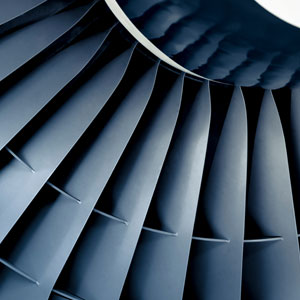Aerospace Castings Densification

- Aircraft Engine Turbine Blades
- Aircraft Components
- Structural Aerospace Castings
One of the early uses of Hot isostatic pressing (HIP) was to enhance the properties of cast turbine airfoils. Today, HIP is used to remove porosity from a wide range of nickel-based super alloy and titanium precision castings for aircraft engines and structural components. The resultant improvement in strength and service life is especially important for parts which are exposed to very high stresses, such as aircraft turbine blades. In addition, castings can be designed lighter by incorporating HIP into the manufacturing process.
Advantages:
- HIP densified castings show improved strength, ductility and fatigue life with significantly less variation from casting to casting. The improved and more consistent material properties reduces part over design. This also decreases quality assurance costs and opens new applications.
- By removing service-induced porosity, HIP is used to rejuvenate aircraft turbine blades, extending their service life for improved economy. In addition to removing creep porosity, HIP improves the weld or braze material by removing porosity and improving bonding.
- Hot isostatic pressing salvages castings scrapped for internal porosity - in fact, it is the only effective way to repair porous castings. Casting yield is significantly improved, resulting in lower costs and more effective utilization of raw materials.
- Significant cost savings may be realized by starting with a cast part and then HIPping to improve its properties as compared to machining the part from a solid.
Aerospace materials that typically can be densified using HIP:
- Aluminum alloy castings
- Mteal Matrix Composites (MMC's)
- Cobalt Chromium alloy castings
- Stainless steel castings
- Alloy steel castings
- Nickel & Colbalt-based superalloy castings
- Titanium alloy castings


